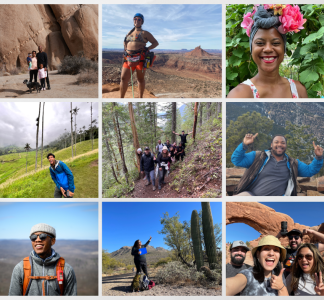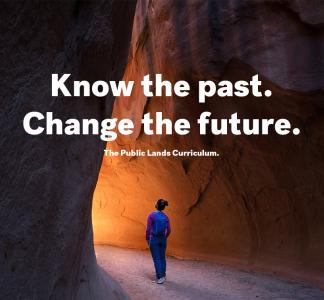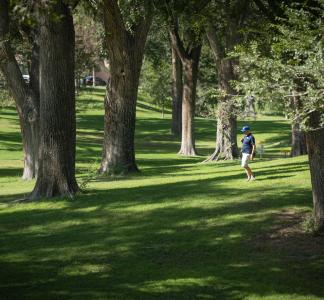5 ways to make the outdoors more accessible for people with disabilities
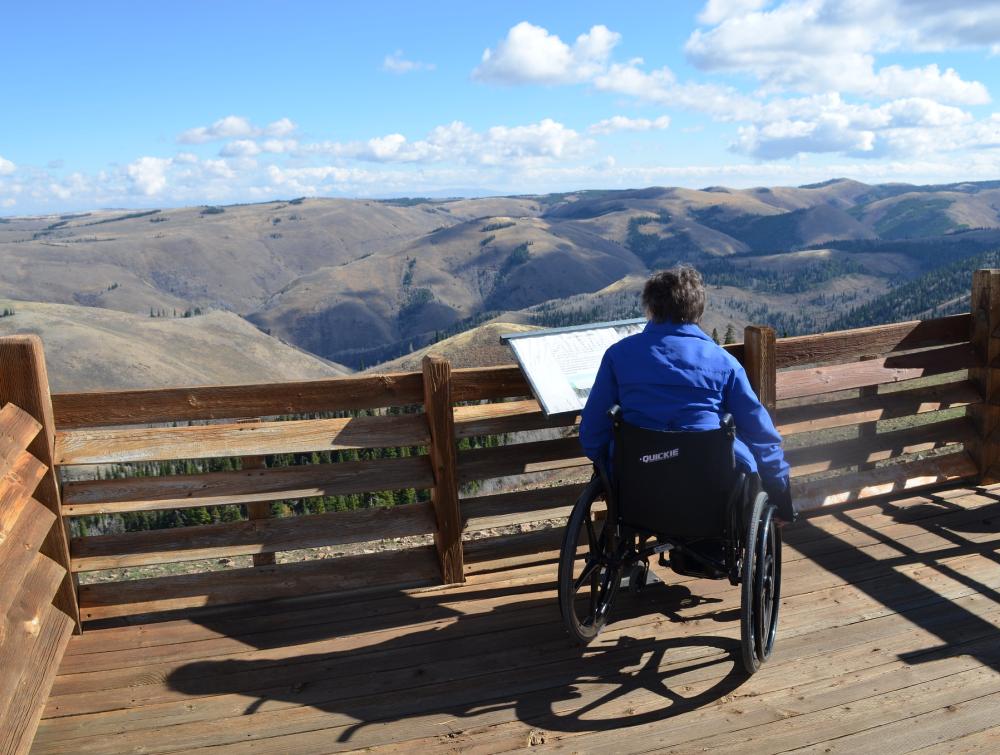
A person at the Pike Mountain Overlook in the Sawtooth National Forest, Idaho.
Nancy Brunswick
Removing barriers, providing better info is key
Earlier this year, I went on a road trip through the Southwest and stopped by some of the most beautiful national parks, including White Sands and Carlsbad Caverns, both in New Mexico. As I was walking on a boardwalk through some of the dunes, a couple asked me if I could take their picture with their son, who was in a wheelchair. The next day, I saw them again at the caverns. We smiled at each other and went about our day.
Pretty normal experiences at some incredible natural places, right? But it occurred to me that without that boardwalk on top of the sand, or the wheelchair ramp leading into the caverns themselves, this family would have a hard time enjoying it—or might not have been able to participate at all.
A lot of the activities we might take for granted, including the outdoors, simply aren’t accessible to everyone. I, myself, have often been ignorant of the challenges facing people who live with mobility differences, sensory impairments, chronic illnesses or mental health conditions as they navigate everyday life (let alone recreation).
We must make outdoor spaces and public lands more accessible and inclusive for everyone.
These issues exist on public lands like national parks, too. Despite laws like the Americans with Disabilities Act (ADA) and Architectural Barriers Act (ABA), which requires federally funded facilities and outdoor areas to be accessible to people with disabilities, there is still a long way to go for people with disabilities to have full access—let alone feel fully welcome. Common problems include old infrastructure, budget constraints, natural and rugged terrain and lack of awareness or insensitivity from other visitors.
Efforts are ongoing to improve accessibility on public lands, with many agencies and organizations even creating their own guidelines. On September of 2023, Representatives Melanie Stansbury (D-N.M.-01) and Juan Ciscomani (R-AZ-06) introduced the Promoting Accessibility on Federal Lands Act, which is aimed at making public lands more accessible to people with disabilities. We also need to work together to break down barriers, raise awareness and create a culture of inclusion. And we can only do this by collaborating and putting people with disabilities at the center of accessibility conversations.
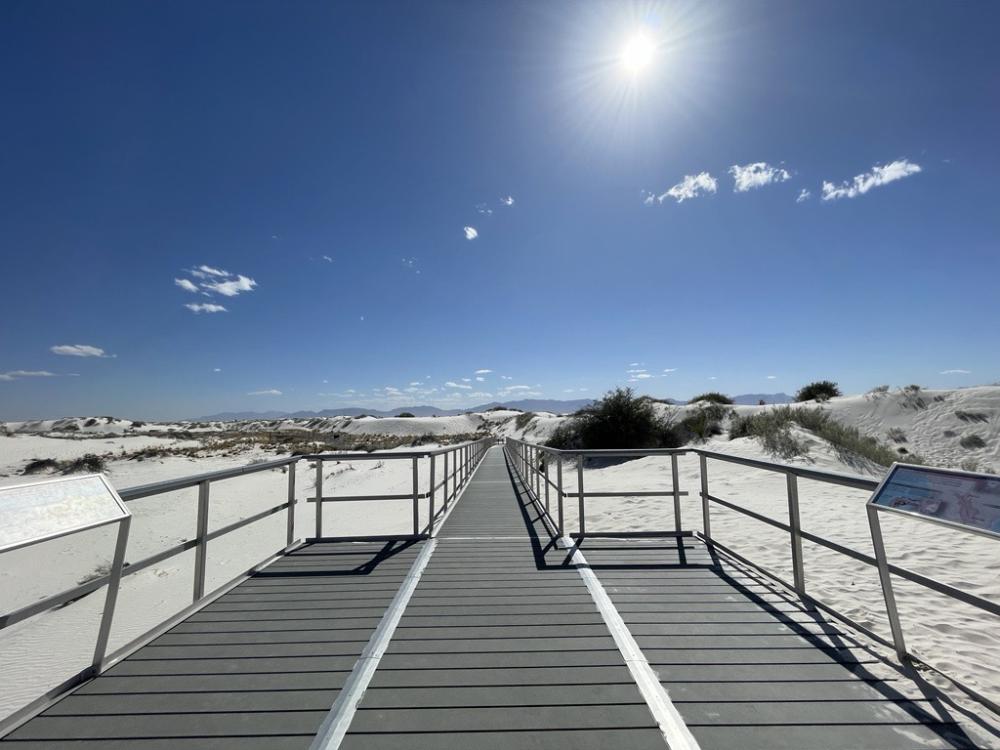
The Interdune Boardwalk at White Sands National Park in New Mexico.
Nicole Segnini
1. Remove physical barriers and build spaces that serve everyone
Uneven terrain, steep inclines and a lack of ramps or handrails are just a few of the obstacles that people with disabilities often encounter in outdoor environments like national parks and trails. Agencies need to continue developing accessible trails, boardwalks and pathways with appropriate slopes and surfaces; install ramps, handrails and curb cuts to enable wheelchair access; and ensure there are accessible parking spaces, restrooms and picnic areas.
For example, for a trail to be considered accessible, it generally needs to be at least 36 inches wide to accommodate a wheelchair or other mobility device. Trail surface should be stable, firm and slip resistant, which could include materials like crushed stone, compacted soil or other firm surfaces. Tree branches and other low-hanging obstacles should be cleared to provide at least 80 inches of clearance above trails and walkways. You can learn more about making sure outdoor spaces are accessible here.
Prioritizing universal design in new construction and renovations is important and makes it easier for agencies and businesses to comply with accessibility requirements. That means building environments so that they are usable by a wide range of people, regardless of age, size or disability status – with a special focus on the needs of people with disabilities.
2. Let people know what’s waiting for them before they arrive
Providing accurate and comprehensive information about accessibility features, services and programs available in outdoor spaces is vital. That means telling visitors what they will find before they arrive—for example, the width, slope and condition of surfaces (it isn’t enough just to label certain trails “accessible”). Those details need to be widely available, including via accessibly designed websites.
At the park itself, too, maps and signage should be designed with accessibility in mind, including features like braille, large-print text and audio recordings. Guided tours and other recreational programming should also be planned in a way that caters to different abilities. For instance, parks can make it easier to rent wheelchairs.
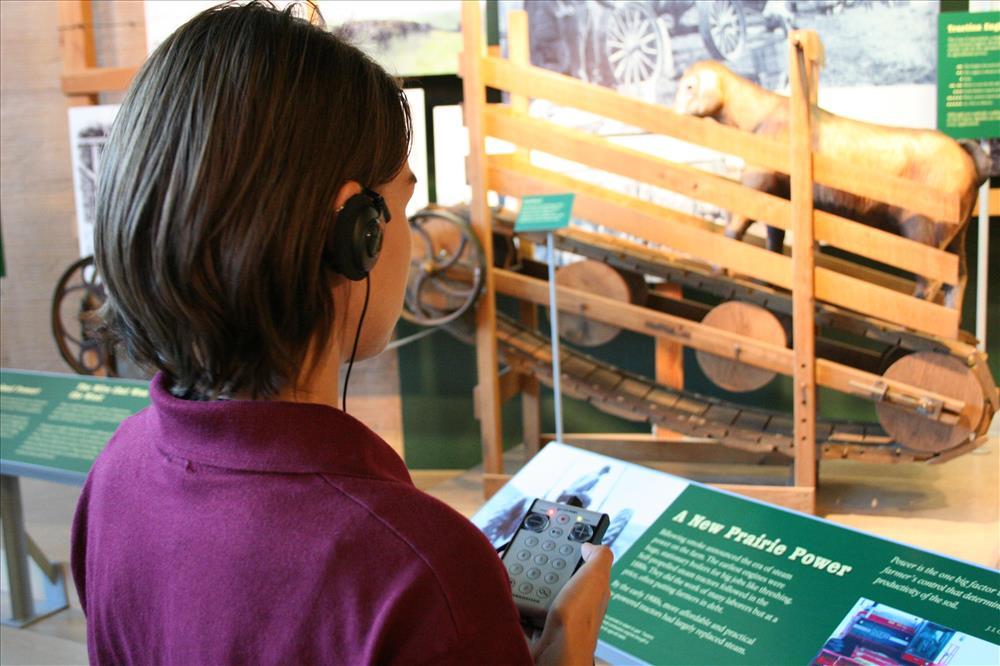
Audio description of displays at Homestead Heritage Center in Nebraska.
NPS
3. Make sure people with disabilities are at the center of planning efforts
Enhancing accessibility in public lands requires collaboration among many stakeholders: government agencies, park officials, policymakers, disability advocacy organizations and people with disabilities.
Centering people with disabilities extends to the way park agencies train their staff in disability awareness and etiquette, which includes communication techniques, understanding diverse needs and encouraging visitors to be respectful to create a welcoming environment for all. They should also organize events, workshops and awareness campaigns to highlight the importance of accessibility and inclusion in outdoor spaces.
Above all, we must prioritize the voices of those individuals who live with a disability. They need to be part of decision-making processes and their input should be considered when making accessibility improvements or developing programs or recreational activities. After all, who knows better than they do on what changes need to be made? We can create outdoor spaces that truly meet their needs when we truly value their perspectives.
4. Raise awareness and promote inclusion for everyone
It’s not just about developing ramps and better park maps. We also need to transform outdoors culture and combat more subtle forms of ableism. For instance, media about sports and outdoor recreation should reflect a fuller array of bodies and abilities. Despite positive steps like the Paralympics shown on TV and other media, people with disabilities simply aren't a prominent part of the narrative about who gets to enjoy the outdoors, potentially discouraging those who might otherwise give it a try.
That’s not to say people with disabilities should be shoehorned into outdoor recreation media all over the place. The disability community shouldn’t be treated as merely a vehicle for “inspiring” people or made an uncomfortable focus of others’ attention.
We should be considering how we act in our personal relationships, too. When you’re talking with friends about doing a five-mile hike over rocky terrain, be aware that it’s not an “easy” activity for everyone and you shouldn’t discuss it as though it is.
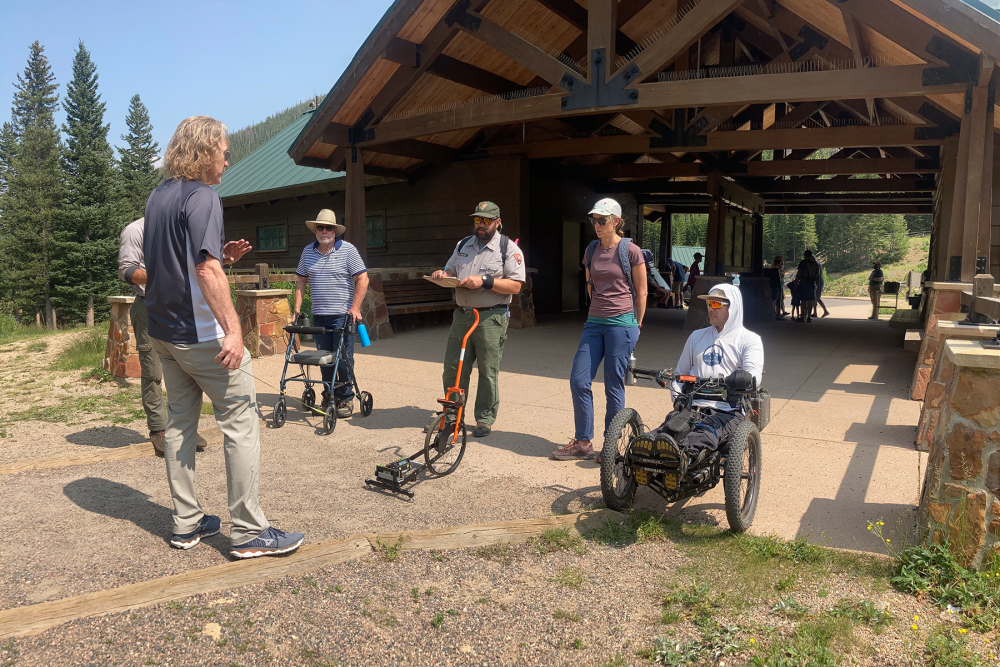
Trail staff and mobility device users measuring a trail during a High Efficiency Trail Assessment Training (HETAP) at Rocky Mountain National Park, Colorado.
Quinn Brett, NPS
5. Tell the stories of the disability community
Public lands should depict a more holistic and truthful U.S. history by incorporating more stories from and about the disability community. Increasing national parks, monuments and historic sites dedicated to preserving and interpreting these stories is crucial. These spaces should highlight the struggles, successes and contributions of people with disabilities, not only honoring them but also educating visitors about their challenges and progress.
Some examples of commemorated disability history include Maryland's Catoctin Mountain Park, where Camp Greentop has hosted children with disabilities since the 1930s. Harriet Tubman—who survived a brutal assault by a slave owner and endured a lasting disability marked by lifelong seizures and narcoleptic episodes—is celebrated across sites like New York's Harriet Tubman National Historical Park and Maryland's Harriet Tubman Underground Railroad National Historical Park. The depiction of President Franklin D. Roosevelt in a wheelchair at the FDR Memorial also represents a significant milestone, concluding a six-year campaign led by disability advocates aiming to portray the 32nd president as he truly lived.
By amplifying the voices of the disability community in these public spaces, we are working towards a more inclusive society that values empathy, understanding and the importance of diversity.
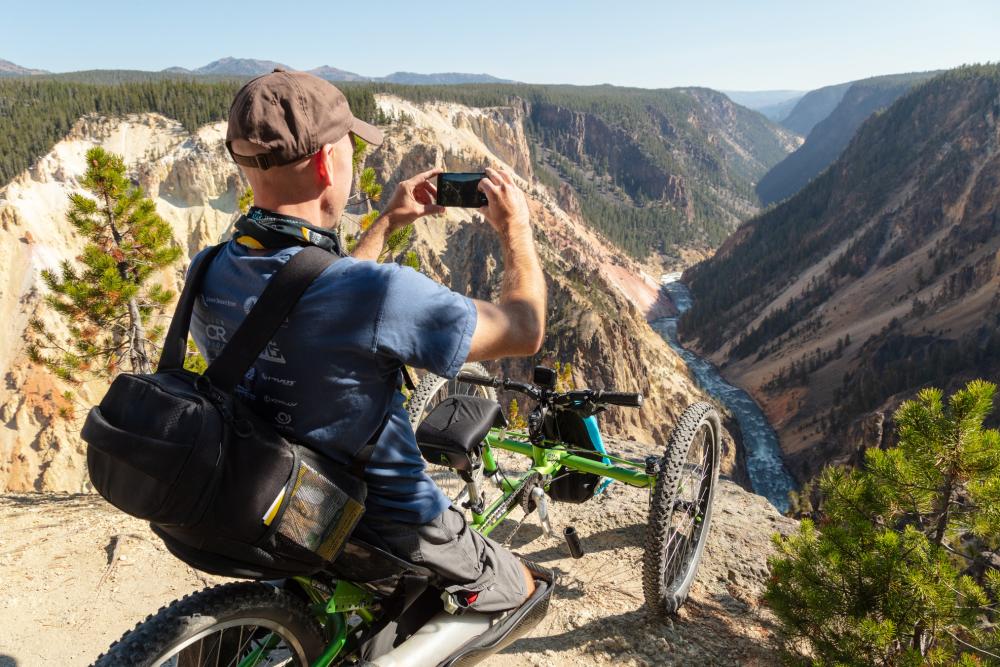
A man photographing the Grand Canyon of the Yellowstone from an off-road wheelchair.
Jacob W. Frank, NPS
